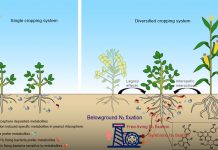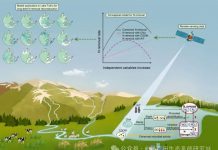Xiyang Wanga Dongsheng Yu *a Chaofan Lib Yue Panc Xiuhong Wangc Jianjun Pand and Xuezheng Shie. Characteristics of Variations in the Organic Carbon Fractions in Paddy Soils. SSSAJ 2016 Vol. 80 No. 4 p. 983-991
Abstract
The use of three conceptual pools for soil organic carbon (SOC) proposed by the CENTURY model to study soil organic C (SOC) dynamics helps to more clearly understand the mechanism of C sequestration and the stability of SOC pool in farmlands. We studied a typical rice-growing area Chengdu Plain in southwestern China. Based on historical soil data collected in the early 1980s 48 sampling points that include four major types of paddy soils from the surface layer (0–20 cm) and the subsurface layer (20–40 cm) were selected to collect soil samples (n = 96) in 2010. A 100-d laboratory incubation was conducted to measure the SOC decomposition rates at different times and data from the incubation experiment were fitted to a three-pool first-order model that divided SOC pool into active (Ca) slow (Cs) and resistant (Cr) SOC fractions. Based on these data a universal predictive method for the concentrations of SOC fractions was developed and used to obtain the 1980s’ concentrations of SOC fractions. The results showed that an exponential function model (Dsoct = a – b × ct) can be used as the optimal prediction model for the SOC decomposition process. The Ca Cs and Cr concentrations increased in surface and subsurface soils in the study area from 1980 to 2010. The increases of Cs and Cr contributed to more than 90% of the increase in the paddy SOC pool whereas the contribution of the Ca increase was less than 10%. Thus the increase in the paddy SOC pool mainly derived from the increases of Cs and Cr.







